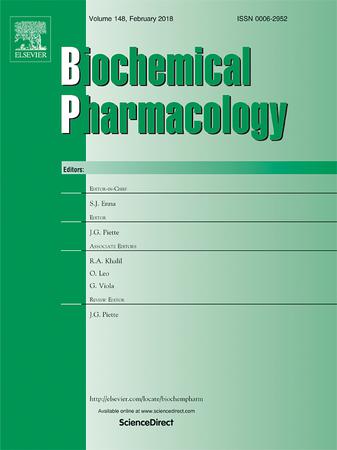Sulforaphane: An emerging star in neuroprotection and neurological disease prevention
IF 5.3
2区 医学
Q1 PHARMACOLOGY & PHARMACY
引用次数: 0
Abstract
Neurological diseases, including both acute injuries and chronic neurodegenerative disorders, represent major contributors to morbidity and mortality worldwide. Chronic neurodegenerative diseases, such as Alzheimer’s disease (AD) and Parkinson’s disease (PD), which require long-term management, present significant challenges in the search for neuroprotective agents with reduced adverse effects and enhanced therapeutic efficacy. Sulforaphane (SFN), a bioactive compound found in cruciferous vegetables like broccoli and cauliflower, has garnered considerable attention for its potent neuroprotective properties and overall health benefits. Marketed primarily as a dietary supplement, SFN has shown a variety of biological activities and therapeutic potential in neurological diseases. Recent surging studies including ours have highlighted its ability to impede the progression of AD, PD, and cerebral ischemia by fostering neurogenesis and inhibiting apoptosis, oxidative stress, and neuroinflammation. This review aims to summarize the latest research on SFN, exploring its advanced therapeutic potential and underlying mechanisms in various neurological diseases, offering a comprehensive overview for researchers focused on neurological pathogenesis and drug development in neuroprotection.

求助全文
约1分钟内获得全文
求助全文
来源期刊

Biochemical pharmacology
医学-药学
CiteScore
10.30
自引率
1.70%
发文量
420
审稿时长
17 days
期刊介绍:
Biochemical Pharmacology publishes original research findings, Commentaries and review articles related to the elucidation of cellular and tissue function(s) at the biochemical and molecular levels, the modification of cellular phenotype(s) by genetic, transcriptional/translational or drug/compound-induced modifications, as well as the pharmacodynamics and pharmacokinetics of xenobiotics and drugs, the latter including both small molecules and biologics.
The journal''s target audience includes scientists engaged in the identification and study of the mechanisms of action of xenobiotics, biologics and drugs and in the drug discovery and development process.
All areas of cellular biology and cellular, tissue/organ and whole animal pharmacology fall within the scope of the journal. Drug classes covered include anti-infectives, anti-inflammatory agents, chemotherapeutics, cardiovascular, endocrinological, immunological, metabolic, neurological and psychiatric drugs, as well as research on drug metabolism and kinetics. While medicinal chemistry is a topic of complimentary interest, manuscripts in this area must contain sufficient biological data to characterize pharmacologically the compounds reported. Submissions describing work focused predominately on chemical synthesis and molecular modeling will not be considered for review.
While particular emphasis is placed on reporting the results of molecular and biochemical studies, research involving the use of tissue and animal models of human pathophysiology and toxicology is of interest to the extent that it helps define drug mechanisms of action, safety and efficacy.
 求助内容:
求助内容: 应助结果提醒方式:
应助结果提醒方式:


